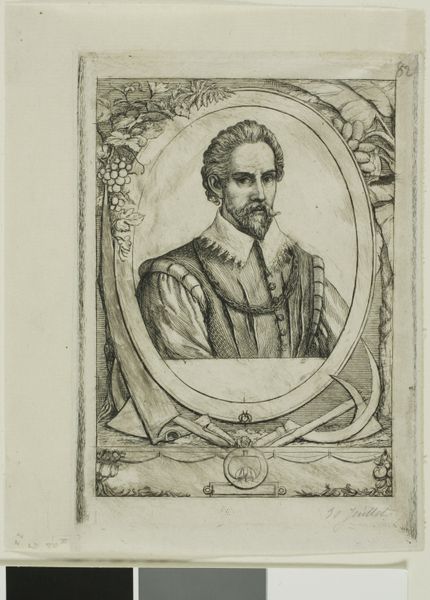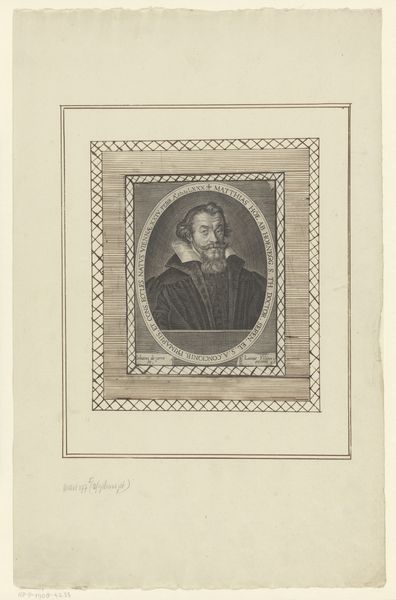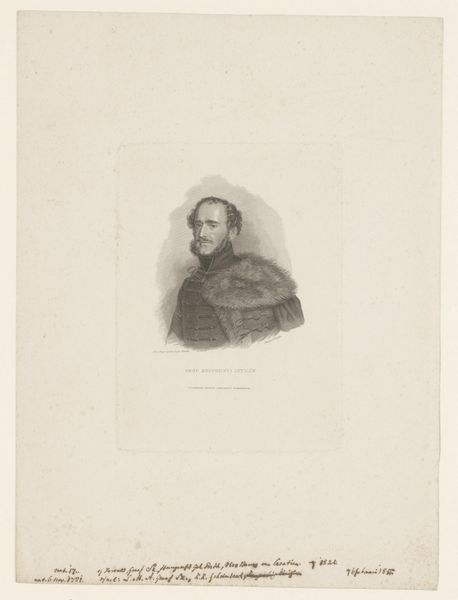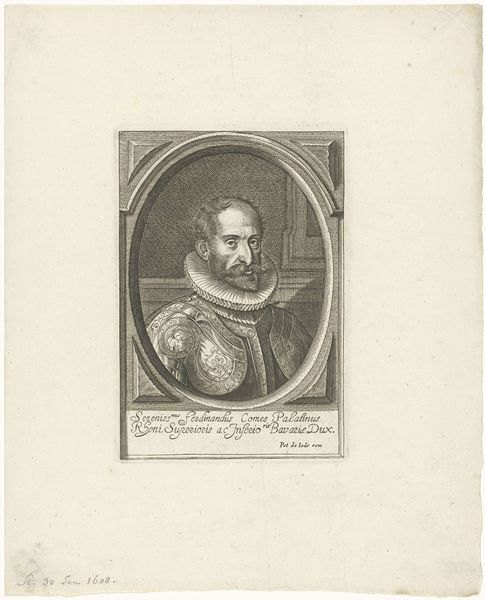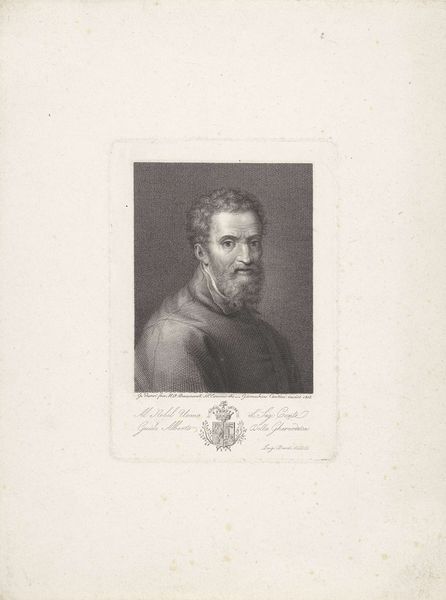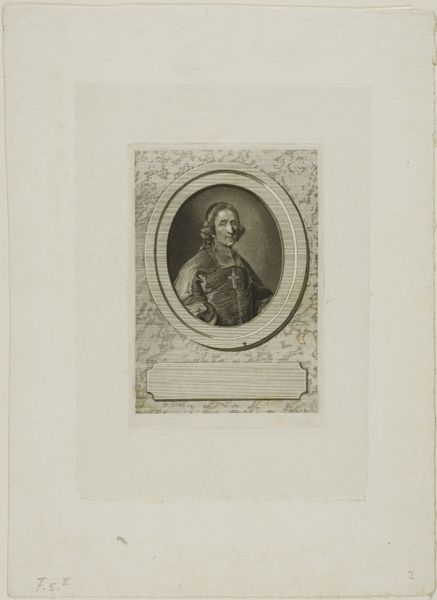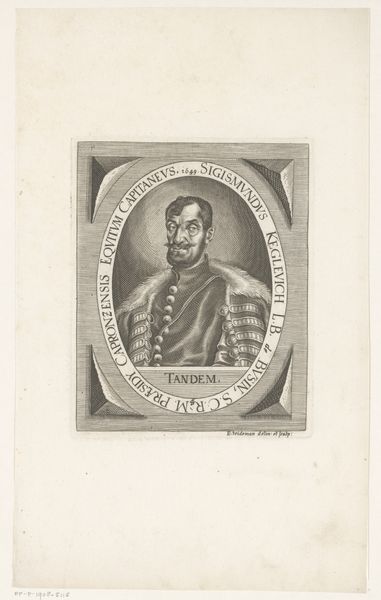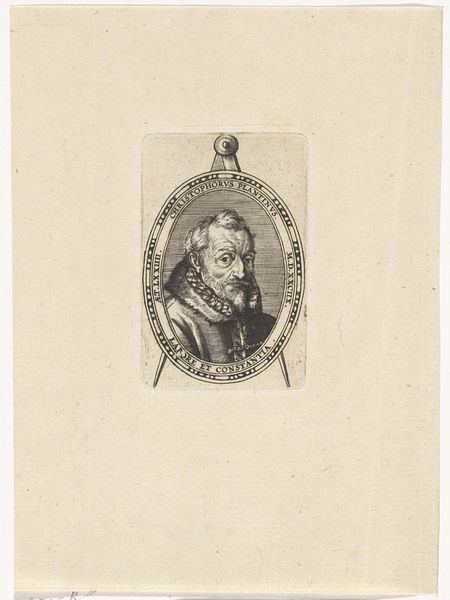
Portrait of René de Laudonnière Sablais (de Burdigale) 1861
0:00
0:00
drawing, print, etching, paper
#
portrait
#
drawing
# print
#
etching
#
paper
Dimensions: 135 × 96 mm (image); 153 × 108 mm (plate); 305 × 221 mm (sheet)
Copyright: Public Domain
Editor: So, here we have Charles Meryon's 1861 etching, "Portrait of René de Laudonnière Sablais (de Burdigale)," rendered in delicate lines on paper. It has such an antiquated feel... what strikes you about it? Curator: It's a fascinating piece when we consider the moment in which Meryon created it, right? France was deep in the throes of colonial ambition, and historical figures like René de Laudonnière, who attempted to establish a French colony in Florida in the 16th century, became potent symbols. But symbols of what, exactly? Are they symbols of national pride, or cautionary tales about failed colonialism? How do you think Meryon felt about that ambition? Editor: That's an interesting point; I hadn't really thought about the backdrop against which Meryon was producing this. I see him celebrating this historical figure. Maybe I'm being too simplistic... Curator: Well, let’s dig deeper. Meryon often imbued his prints with social and political commentary, even when ostensibly depicting historical subjects. What if this "portrait" is not just about Laudonnière, but about the present? The details, the ornate frame almost suffocating the figure – does that speak to an ambivalent view of French colonial efforts, even? Consider the ways colonial narratives often erase Indigenous perspectives. Editor: I see what you mean. The very act of framing, of portraying, can be a form of asserting control. What seems like a straightforward homage becomes much more complex. Curator: Exactly! By drawing attention to these past colonial ventures, Meryon compels us to critically examine the power dynamics inherent in representation and remembrance itself. It questions the motivations behind these representations, which ultimately served nationalistic purposes that reinforced power imbalances within France, where one’s standing was tied to class. Editor: So it's not just a portrait; it’s a lens through which to examine the broader societal narratives. Thank you, this gave me much to think about regarding this piece. Curator: Precisely, art invites that intersectional examination.
Comments
No comments
Be the first to comment and join the conversation on the ultimate creative platform.
